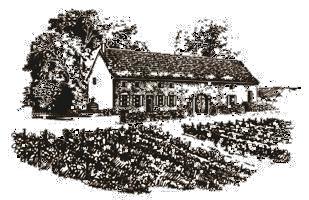Domaine Chevrot, Maranges Rouge 1er Cru `La Fussière`


Vintage: 2019
| Vintage | Product Code | Format | Closure | Availability |
|---|---|---|---|---|
| 2019 | CV805B19 | 6 x 75 | Natural Cork | Available |
Producer
Domaine Chevrot came recommended by the talented Jane Eyre, who worked with them when she first arrived in Burgundy from Melbourne. Based in Maranges, the domaine is run by brothers Pablo and Vincent, who took over from their parents in 2007 after gaining experience in Bordeaux and Central Otago. They farm the 19-hectare estate organically and have introduced horse-drawn ploughing (for less compacted soil) alongside larger barrels to refine the style of the wines. These excellent changes have helped raise the domaine’s profile.
Situated just 10 kilometres south of Puligny and Chassagne-Montrachet, Maranges has been gaining attention due to its wines' increasing quality and affordability. Domaine Chevrot is nestled in the heart of the appellation and is widely viewed as one of its leading producers. Their wines don’t receive SO2 treatment until bottling, due to Vincent being allergic, resulting in under 50 mg/l for red wines and under 60 mg/l for whites.
The brothers constantly look to improve their approach in the vineyards and the cellar. As a result, Domaine Chevrot became one of the pilot research wineries for the BIVB (Burgundy Wine Board) and currently leads a program on combatting the spread of Brettanomyces in Burgundian cellars. This research greatly benefits not only their wines, but those of Burgundy in general.
The Maranges Villages Blanc is sourced from vines grown on granite and gravel soils on the lower part of the hill. The resulting wine is defined by distinctive notes of praline and roasted hazelnuts, alongside a lovely texture balanced with lively acidity. The Maranges Premier Cru ‘La Fussière’ Blanc is sourced from a steep west-facing slope with chalky soils, which Pablo describes as “almost Champagne-like”. The nuances of this site contribute to the wine’s depth, clean fruit, fresh acidity and long finish. The brothers also have two hectares of vines in Santenay, and the Santenay Premier Cru ‘Clos Rousseau’ Blanc is made from fruit grown on chalky soils and aged using 20% new oak. The resulting wine is fresh and slightly honeyed with ripe stone fruit flavours, great depth and a long finish.
Domaine Chevrot’s red wines have a depth of flavour seldom found in Maranges. The Maranges ‘Sur le Chêne’ Rouge comes from a three-hectare ‘lieu-dit’ purchased by Pablo and Vincent’s grandfather. Utilising a 30% whole-bunch fermentation creates perfumed, red-fruit aromatics, alongside gentle tannins and crunchy acidity. The Maranges Premier Cru ‘La Fussière’ Rouge is deeper in colour than the villages wine, with rich but delicate aromas of dark fruits, fine tannins and a powerful yet elegant finish. Its structure is enhanced by 18 months of oak ageing, with 30% new oak used for the first 12 months. The Santenay Premier Cru ‘Clos Rousseau’ Rouge is crafted using 40% whole-bunch fermentation, enhancing the final wine's aromatic profile, whereas ageing in 30% new oak creates structure and complexity.
Vineyards
Maranges 1er Cru 'La Fussière' is a remarkable vineyard site at the top of the Maranges slope, 375 metres above sea level, just below the limestone cliffs that overlook the village. The Chevrot brothers purchased the plot here in 2009 and replanted it. Due to its steep 35% gradient, the site has been abandoned following the Second World War. This is what excited the Chevrot brothers so much - it is a rare vineyard site untouched by the chemical agriculture of the 60s and 70s. Soils in the Pinot Noir plot are comprised of marly Jurassic substratum, covered by a top scree layer of gravel and rock particles and limestone from the surrounding cliffs that aid drainage and lend elegance to the wines. All the domaine’s vineyards are organically farmed, with the help of two draft horses, Valentine and Hotesse.
Vintage
After a mild winter, the spring frosts hit on 5th April and again on 15th, when budbreak had already commenced. Despite efforts to increase temperatures on the lower slopes, some of the grapes were lost to frost damage. A hot summer followed with temperatures peaking at 42.9 °C towards the end of July and prompting the need for careful canopy management to protect the grapes. By harvest, the grapes had reached the perfect levels of phenolic ripeness and, although yields were reduced, the fruit harvested was of excellent quality.
Vinification
The Pinot Noir grapes were hand-picked into small boxes and carefully sorted so that only the perfectly ripe, healthy bunches were used to make the wine. Once at the winery, they were transferred into vats, with 20% of the fruit left in whole bunches, to undergo a 15-day fermentation in stainless-steel with indigenous yeasts. The wine was then aged for 16 months in 228-litre French oak barrels, 30% of which were new, followed by a further 2 months ageing in stainless-steel tanks before being bottled.
Tasting Notes & Technical Details
This wine has an elegant nose with intense aromas of blackberry, black cherry and a subtle spiciness. The palate is concentrated and robust, with dark berry flavours that marry with a marked minerality and structured tannins. A mouthwatering acidity carries the intense flavours onto the lingering finish.
Alcohol (ABV)
13.5%
Acidity
5.05 g/l
pH
3.41
Other wines from this producer
Producer | Wine | Product Code | Features | Style | |
|---|---|---|---|---|---|
| Domaine Chevrot | Maranges Blanc | CV801 | W | Factsheet | |
| Santenay Blanc 1er Cru `Clos Rousseau` | CV802 | W | Factsheet | ||
| Maranges Blanc 1er Cru `La Fussière` | CV803 | W | Factsheet | ||
| Maranges Rouge `Sur le Chêne` | CV804 | R | Factsheet | ||
| Santenay Rouge 1er Cru `Clos Rousseau` | CV806 | R | Factsheet |